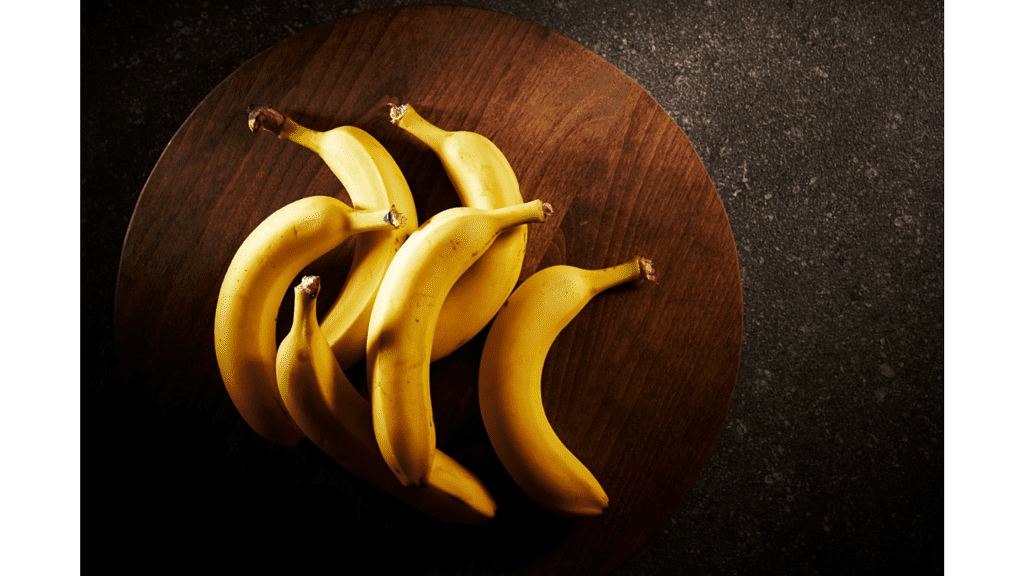In the United States, bananas are sold by the bunch. You may be wondering, how many bananas come in a bunch? The answer is not set in stone—it can vary depending on size and demand. But on average, you can expect to get between 5-12 bananas in each bunch.
The Size of the Bananas

Banana bunches usually consist of one variety of bananas. Depending on the variety, the size of each banana can vary from small to large. For example, Cavendish bananas are typically more popular than Ladyfinger bananas because they have larger fruit with more flavor and longer shelf lives.
So when buying Cavendish bananas for your grocery store or market stand, you would expect fewer bananas per bunch than if you were buying Ladyfingers—since there would be more individual fruits in each bunch if they’re smaller.
The size of banana bunches can also vary due to environmental factors like weather and soil conditions. For example, bananas grown in areas with drier climates tend to be smaller than those grown in wetter climates.
In addition, the ripeness of the fruit can affect its size—bananas picked earlier will typically be smaller than those picked later.
What types of bananas are most common in US grocery stores?
Cavendish bananas are the most common banana found in US grocery stores. Ladyfinger bananas are less common but sometimes available from late summer into early fall.
Cavendish Bananas

Cavendish bananas are the most common type of banana found in US grocery stores, and they look like large yellowish fruits with curved tips. They have a mild yet sweet flavor, and they can be used in a variety of recipes. Cavendish bananas can be eaten raw or cooked. When eaten raw, they have a creamy texture.
Ladyfinger Bananas

Ladyfinger bananas are smaller in size and have an intense flavor. Ladyfinger bananas have a sweet, honey-like flavor when ripe and can be eaten raw or cooked. They can also be used for baking. They are typically more expensive than other bananas due to their shorter shelf life.
Demand Also Influences Bunch Sizes

Aside from the type and size of bananas, demand also affects how many are included in a bunch. Demand refers to how much people want to buy a certain item; if there is high demand for an item, then it will cost more and come in smaller bundles because it takes more resources to produce it.
Therefore, when there is a higher demand for certain varieties of bananas (like Cavendish), you can expect to pay more per pound and receive fewer fruits per bundle than average.
Related Questions About Bananas
What is the best way to store bananas?

Bananas are best stored at room temperature, away from direct sunlight. You can also wrap them in plastic or store them in a cool, dark place like a refrigerator. This will help slow down their ripening process and keep them fresh longer.
How many calories are in a banana?

A medium-sized banana contains about 105 calories. Bananas are also a good source of dietary fiber, vitamin C, and other essential nutrients for overall health.
Are bananas fattening?

No, bananas are not fattening. Bananas are also low in fat and sugar, making them a healthy snack.
What is the nutritional benefit of bananas?
Bananas are an excellent source of essential nutrients like dietary fiber, vitamin C, potassium, magnesium, copper, manganese, and B vitamins. They are also low in fat and calories.
Can bananas be frozen?

Yes, bananas can be frozen. To freeze them, peel the bananas first and then place them in an airtight container or freezer-safe bag. Frozen bananas can be used in smoothies and baking, and they will last up to six months when frozen properly.
What is the shelf life of bananas?

The shelf life of bananas depends on their ripeness. Fully ripe bananas have a shelf life of about 5-7 days at room temperature. Unripe bananas can last up to 2 weeks and should be stored in a cool, dark place away from direct sunlight. Overripe bananas should not be eaten and should be discarded.







